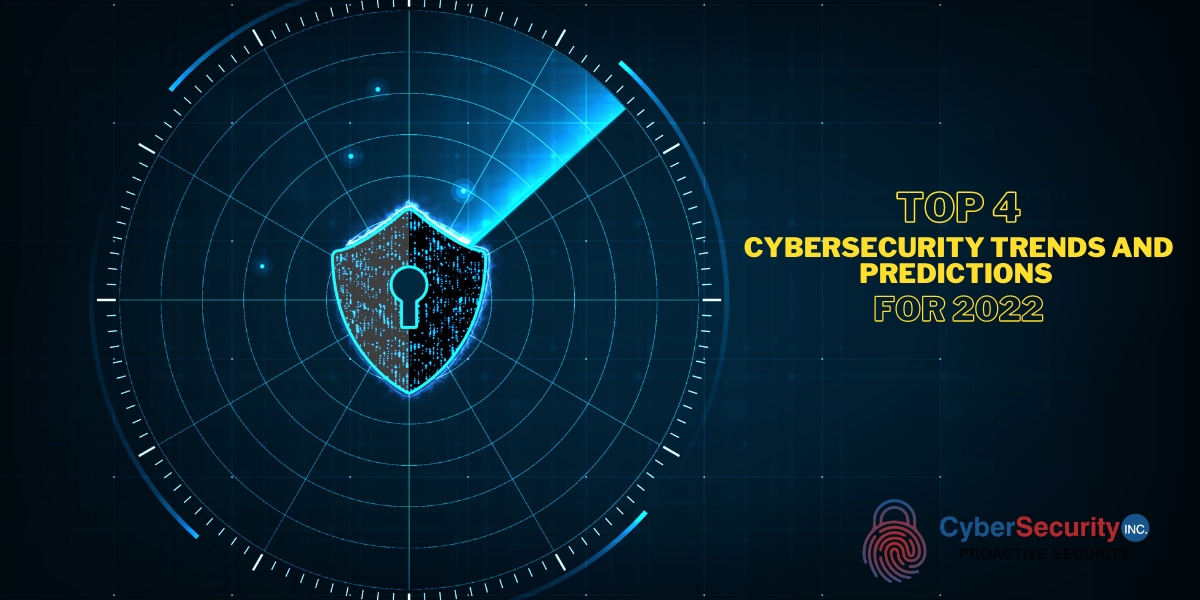Over the past few years, we have witnessed a tremendous increase in the cybersecurity landscape. Especially since the pandemic has dominated every aspect of lives, the need for cyber security solutions has become the core focus of nearly all businesses and their decision-making as well. The year 2022 has already started, and now is the time to fine-tune our new year’s cyber security resolutions. It’s time now to look at the top cyber security trends and predictions to map them to your security strategy. so let’s get started with our predictions;
Ransomware Remains the Biggest Threat:
Ransomware will remain one of the biggest threats in 2022 of course and will evolve along a few tracks. Attackers will find more and more initial exploits to quickly reach high-value targets and increase the size of their recent demands. Critical infrastructure will become the battleground of nation-states. Attacks will increasingly target information security environments and fourth ransomware methods will focus on data explication. Unfortunately, ransomware will not be your only worry. Supply chain attacks, specialized vertical threats, exploits of weaknesses in cloud security, and external remote services will still continue to rely on social engineering and fishing for their initial breach.
Tech and Innovation Will Stay On Top of CISO’S Agenda:
Tech and innovation will play an increasing role in organization cyber security strategies .2021 was a record-setting year in terms of cyber security venture funding. This search investment drives technology innovation in the cyber security industry and increasingly shapes cyber security strategies in organizations. Although investment in tech should remain risk-based driven, there is no one-size-fits-all technology. We still spot five main tech trends in cyber security;
– Move towards more visibility: you cannot protect what you cannot see. Organizations will increasingly invest in internal and external visibility tools such as risk-based vulnerability management, penetration testing platforms, and cyber threat intelligence.
– Zero Trust: We should never trust, always verify, which is one of the major hello in the 2022 zero trust journey of organization which will accelerate to reduce the risks induced by our new digital way of work.
– Hybrid cloud security: Bringing trust to the cloud is a common concern for most organizations. As they further adopt cloud computing. They will need to implement a layer of security controls across their cloud edge and traditional environments.
– Data & Identity Protections: Organizations will have to start testing privacy-enhancing computation tools such as homophobic encryption, zero-knowledge proof, or confidential computing to protect their golden nuggets
– Managed Detection and Response (MDR): Since many traditional socks are failing to prevent the rapidly changing techniques employed by attackers. MDR uptake will continue to grow in 2022.
Assess and Improve Your Security Posture:
If you feel like it is impossible to catch your breath in today’s complex threat landscape and expand the attack surface, maybe it is time to stop to assess and improve. Beyond assessing whether to employ more security analytics and automation, shift towards the edge with access right governance across the entire stack. A major element of assessing and improving will be to simplify and rationalize. It is typical for organizations to have somewhere between 15 and 50 different security technologies and enough staff to be experts in only five of them, which does not help with the shortage of cyber security skills. Too many security vendors lead to more complicated security operations and more security personnel needs.
Keep Regulations & Compliance On Your radar:
security and data privacy regulations must be on your radar with the incoming level of risk from cyber-attacks against critical infrastructure, pipelines, hospitals, and increasing numbers of data breaches, governments worldwide have been forced to act. In the U.S, a new privacy legislation in different states will continue to appear until there is agreement on federal law. We will also see the implementation of Biden’s administration plan to address the recent U.S attacks. In Europe, the cyber security agenda is also very active, including; talks on revising GDPR for more uniform implementation, finalizing the NIST directive 2.0 to protect clinical infrastructure, increasing sectoral regulations such as DORA for financial services, and a cyber resilience act to make IoT device security a reality. This will make compliance more complex for most organizations and require additional international cooperation and standardization.

